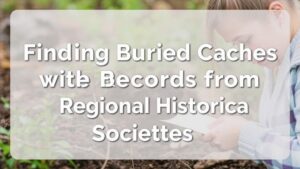Mining Old Wool Processing Facility Records for Textile Artifact Leads
Mining Old Wool Processing Facility Records for Textile Artifact Leads
The textile industry has evolved significantly over the centuries, with wool processing facilities playing a pivotal role in this transformation. This article focuses on the potential of mining historical records from old wool processing facilities to glean insights on textile artifacts, their provenance, and their significance in both historical and contemporary contexts. By analyzing archival data and record-keeping practices, researchers can uncover valuable information that informs current textile studies.
Historical Context of Wool Processing Facilities
Wool processing facilities have a rich history dating back to the 12th century in Europe. e establishments, often located in regions such as England and Scotland, were vital for transforming raw wool into finished textiles. By the late 19th century, the Industrial Revolution catalyzed mass production, leading to the establishment of larger wool mills.
For example, the Rise of the Yorkshire wool industry is notable, as facilities like the Bradford Wool Exchange–established in 1867–became centers of innovation and trade. These facilities keep extensive records, which present an opportunity to uncover significant historical textile artifacts.
Importance of Archival Research
Types of Data Available
The records maintained by wool processing facilities often include:
- Production ledgers detailing quantities and qualities of wool processed.
- Invoices and correspondence with suppliers and customers.
- Employee records and employment practices.
- Technical documents regarding machinery used in the processing of wool.
Case Studies of Effective Record Mining
One pertinent case study is the research conducted on the records of the Victorian woollen mills in Geelong, Australia. Researchers accessed historical ledgers spanning from 1850 to 1900 and uncovered crucial information about production techniques, seasonal production variations, and significant changes in market demand.
Another example is the redevelopment project in Barnsley, England, where archaeological digs revealed textile artifacts consistent with documentation found in local wool processing facility records from the 19th century. This synergy between archival research and material culture has deepened the understanding of regional textile history.
Challenges in Mining Records
While there is significant potential in mining wool processing facility records, several challenges arise:
- Data Preservation: Many historical documents have deteriorated over time, which impacts their usability in research.
- Digital Access: The transition to digital archives has not been uniform, leaving many records in inaccessible formats or locations.
- Interpretative Skills: Understanding the context of historical documents requires expert knowledge in both textile history and archival practices.
Modern Applications and Future Directions
Discovering information through these records can inform contemporary practices in the textile industry. For example, understanding historical processing techniques can inspire current sustainable practices and innovations. Also, these records contribute to heritage tourism, attracting visitors interested in the textile traditions of a region.
Plus, by utilizing technologies such as digital archiving and databases, researchers can facilitate greater access to these records, thereby fostering collaborations across disciplines, including anthropology, history, and industrial design.
Conclusion and Actionable Takeaways
Mining old wool processing facility records yields rich insights into the textile industry’s history and can guide contemporary practices. Interested parties, particularly researchers and heritage organizations, should consider taking the following actionable steps:
- Identify and reach out to local historical societies or archives that house wool processing records.
- Develop partnerships with textile historians to provide context to findings from records.
- Leverage technology to create digital repositories of historical documents for broader access and research opportunities.
By embracing the wealth of knowledge contained within these records, we can significantly enhance our understanding of textile history and contribute to the sustainable practices of the future.



